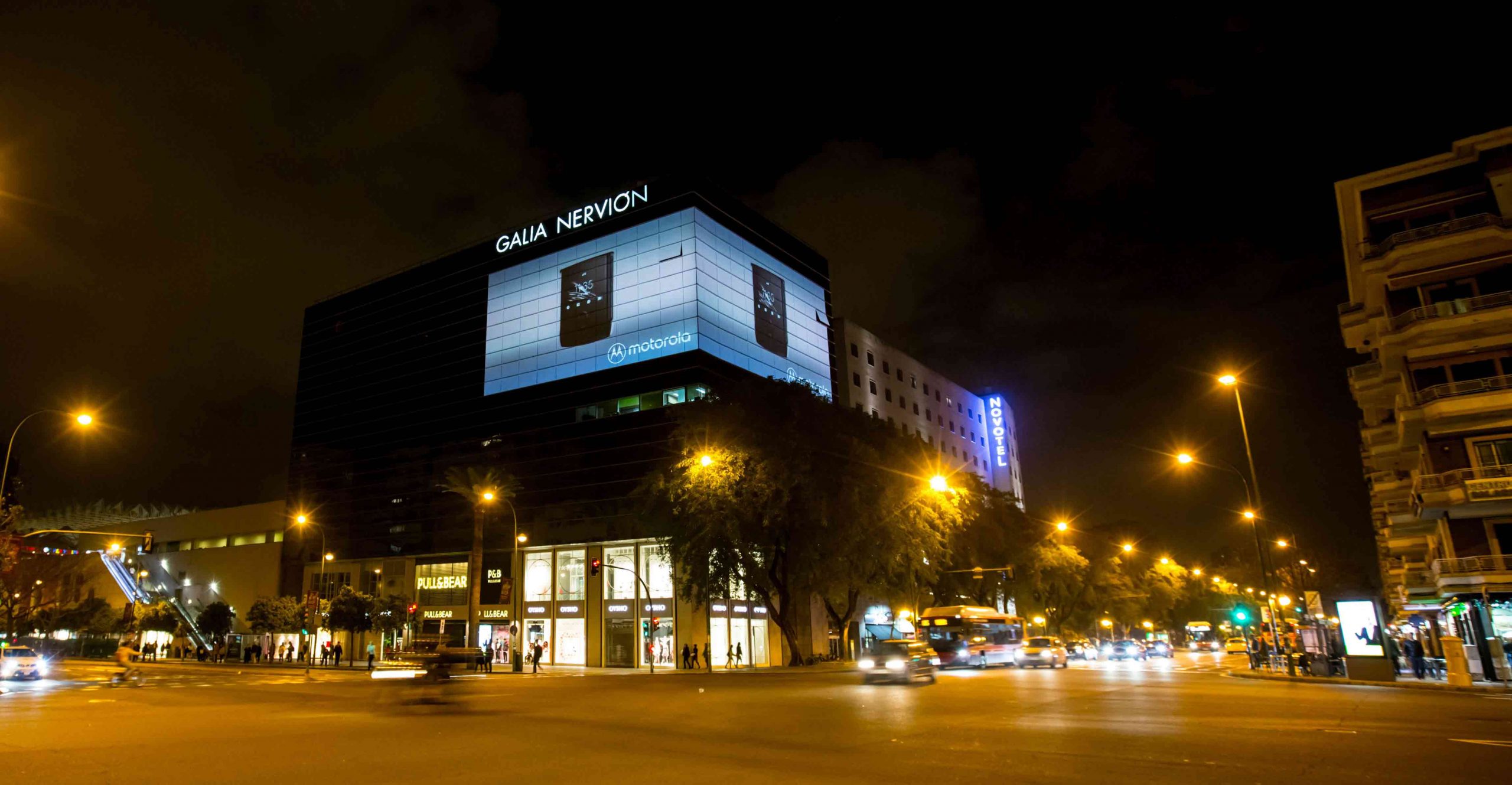
Spanish Media Company Uses Projection For Its Large-Scale DOOH Ad Positions
March 12, 2020 by Dave Haynes
If you have been involved in the digital signage and digital OOH sector for a while, you have seen the steady evolution of big printed spectacular ads on the sides of buildings to digital versions.
We all think of the digital piece being LED, but here’s a case where the the operators instead went with projection.
LumenAd, a Seville, Spain advertising company, is using laser projection as an alternative to fixed LED displays that cover a surface and likely require engineering work to support the structures.
The company works with Christie, which pushed out word about a new install in Seville’s main shopping district.
LumenAd now offers video projection for outdoor advertising as an alternative to conventional platforms like paper, vinyl, canvas and LED. In doing so, it is bringing to the market a new kind of high quality, versatile advertising that seamlessly integrates into the surrounding environs. This premium support, called Big Brand, is aimed at major brands that wish to reinforce their image by identifying with values like respect for the environment, quality and innovation.
Alfonso Callejas, CEO of LumenAd, explained: “In addition to the size, image quality and versatility, the video projection ensures impeccable visualization in DOOH projects, and also affords other major benefits in terms of environmental sustainability and its non-aggressive integration in the urban landscape.”
The company is using the two Christie Crimson projectors in a DOOH installation on the facade of Galia Nervión, a well-known building located in the heart of Seville’s main shopping district. The screen is strategically placed at the crossroads of two of the city’s main avenues, which is a high traffic area frequented by vehicles and pedestrians.
From a technical viewpoint, the installation is an international milestone given its complexity and novelty. There are three buildings involved: two of them host the projectors on their rooftops while the third (Galia Nervión) acts as a screen. The equipment is not visible and does not occupy the public space, which makes its integration into the urban landscape optimum.
The result is a “full motion” screen covering 460 square meters (40 meters wide by 11.5 meters high) with a resolution of 3840 x 1080 pixels, which covers part of the building’s east and south façades. Together, the two Crimson projectors with WUXGA resolution (1920 x 1200) produce 50,000 lumens.
Besides the actual projector itself, one of the two “projector buildings” also houses the equipment for content playback and the monitoring and control systems, all of which are completely automated and remotely controlled. To synchronize the two screens, the video signal is relayed wirelessly to the second projector, producing one single screen split down the middle by 90 degrees at the corner of the building.
To protect the projectors outdoors, LumenAd designed a special casing that accounts for factors including humidity, ventilation and waterproofing. The throw distance of the two projectors to the screen is approximately 50 meters, and the distance between the projectors is 90 meters. The screen can be visualized from 10 to 300 meters.
My first reaction to this was wondering how advertisers felt about a medium only visible come nightfall.
It was decided to forego use during daylight in order to make a bigger impact at night and to ensure that the messages stand out clearly in the urban space. At the same time, the projections fulfil all existing environmental regulations on the maximum light output of information supports at night. Some of the brands which have already used the support are Telepizza, Motorola, Vodafone, McDonalds, and Beefeater.
“Unlike LED technology supports, which generally work with low resolution, here we can assure a minimum of High Definition (HD) and the possibility of screening in 4K, giving brands the guarantee of impeccable visualization,” says Callejas.
Interesting. By doing digital, you are surrendering a big daytime audience. But with certain brands and locations, maybe that’s not such a big deal.
On the positive side, a heritage building with the right, blank surface can take on advertising without being affected in any way by added technology. That makes conservation and heritage people happy.
For operators, big Christie laser projectors and all-weather set-ups are not cheap, but likely way, way cheaper than a fixed LED install if quality tech used for it.



Leave a comment